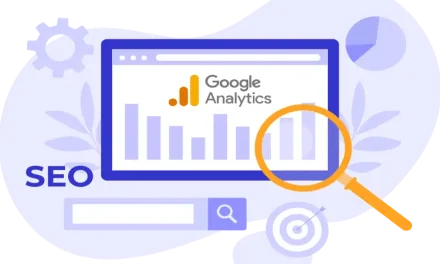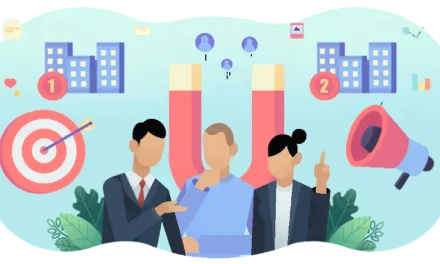It’s rare that a B2B marketer is funny on LinkedIn.
And not “posted a meme about ChatGPT taking over my job” funny.
I mean genuinely, “I would watch this content in my free time” kind of humor.
And she’s got 20K followers (and some viral videos with 4M+ views) to prove it.
Today’s expert tells us to stop obsessing over high-performing content, and why your buyer persona is bingeing Selling Sunset, too.

Heike Young
Head of content, social, & integrated marketing, Microsoft
- Job: She leads the Microsoft teams that shape their storytelling and ensures their content strategies resonate with target audiences.
- Claim to fame: Multimedia content is Heike’s superpower. She grew her LinkedIn following from 2K to 20K in one year by posting funny videos. She also launched Salesforce’s first branded podcast, and her team managed Salesforce’s YouTube account with 800K+ subscribers.
-
Fun fact: Heike used to run her own business throwing princess birthday parties and story hours for kids.
Lesson 1: Your goal shouldn’t be high-performing content. Period.
When Young walked into a conference room during her first day at Microsoft (this may have been virtual, but for the sake of the story let’s picture the Mad Men office), she told her team that her goal isn’t to create high-performing content.
Her goal is to change minds.
Every time her team creates a piece of content, she asks herself: “What can we create that’s actually going to change the hearts and minds of our audience? And that’s a heady task.”
Here’s an example that hits home for us: At HubSpot, we’ve hit millions of views each year on one post alone — “The Top Movie Quotes of All Time.”
(Yep. About as far from a product conversion as you can get.)
But this year we took another look at that post and said, “Does it matter that it attracts millions of views if it has nothing to do with… well, HubSpot?”
So we (finally) retired the post. (I suggested a Viking funeral, but we settled on a 301 redirect.)

This is Young’s motto and driving motivation behind all of her work. She says, “We hope it performs well, but really our goal is to create influence and to change how people think and act — and for our brand to grow when they do.”
There’s a bonus to this lesson: Creating content that changes minds means writing, recording, and posting content that is provocative and unique. And that’s the only type of content that will cut through the noise, anyway.
As Young puts it: “Bold POVs are pretty much the only content left that resonates.”
Lesson 2: Your B2B buyer is the same person who’s bingeing Selling Sunset.
A couple of years ago, Young took comedy classes in LA at Upright Citizens Brigade, which touts past students like Amy Poehler, Kate McKinnon, and Nick Kroll.
And she’s now bringing that comedy to her LinkedIn videos, some of which have amassed millions of views.
Why?
Because her B2B audience is still made up of people. And people like to laugh.
“There’s this idea that is really important to me, which is content that moves with the culture. The same person who approves the PO for your SaaS company also binges Selling Sunset or does Twitch live streams at night.”
She adds, “In B2B, we’ve gotten into this habit of acting like people are so different. You know, they come to work and put on their work outfit and suddenly their standards for content or entertainment are different.”
Her remark reminded me of Severance: There is the buttoned-up, professional B2B audience, and then there are the people we get dinner with and watch movies with and call our friends.
This artificial separation doesn’t just make our marketing feel stiff — it makes it ineffective.
Young says, “I personally want to create content that is informed by the culture at large and moves at that speed versus content that feels like it was sealed in a time capsule from 2001.”

Lesson 3: Employee-generated content matters now more than ever.
Young is going all-in on personality-led content in 2025.
Why? Because, as she told me, personality-led content can be the core differentiator for your brand: “Anybody can answer a bunch of questions. Nobody can clone your people.”
(Take that, AI!)
In her current role, she’s really focused on employee-generated content, and empowering her team to create content on behalf of Microsoft.
And she’s walking the walk, too. Which is why, about a year ago, she started posting her own videos on LinkedIn.
She told me, as a leader, she’d been missing the opportunity to create content. To her, it was important to get some skin in the game. “And I also really wanted to bet on myself.”
Sure, it can be hella awkward to post that first awkwardly edited iPhone video of yourself and getting seven likes on it.
But you never know where it could lead.
Coming full-circle to our first lesson, Young adds: “It’s important to change people’s minds around deeper topics, to have deeper conversations, and just to resonate more deeply. Surface-level, basic, one-on-one style answering questions — that’s not really the path forward.”
Lingering Questions
This Week’s Question
As a marketing thought leader, how do you see AI influencing strategic thinking and the creative process in brand building? — Lise Lozelle, senior director of communications and engagement, Best Buddies International
This Week’s Answer
Young: AI is effective as a thought partner. Ask it to poke holes in your strategy and play devil’s advocate. Also ask it to find additional research and data points you haven’t considered. Those workflows can make your original ideas even stronger.
All of that being said, I believe human creativity is more critical than ever, and I love seeing human fingerprints on the content I personally consume. For instance, I’ve recently been swooning over all the tiny creative details in Severance.
I believe some AI-related changes in marketing will happen faster than we expect, and others will happen more slowly. Only time will tell what falls into which category. So I’m leaning into AI where it’s useful for me, and not forcing it where it doesn’t seem helpful.
Next Week’s Question
Young asks: What’s a piece of marketing advice you would have given earlier in your career, but you would no longer give, due to how marketing has changed?
![]()








Last Comments